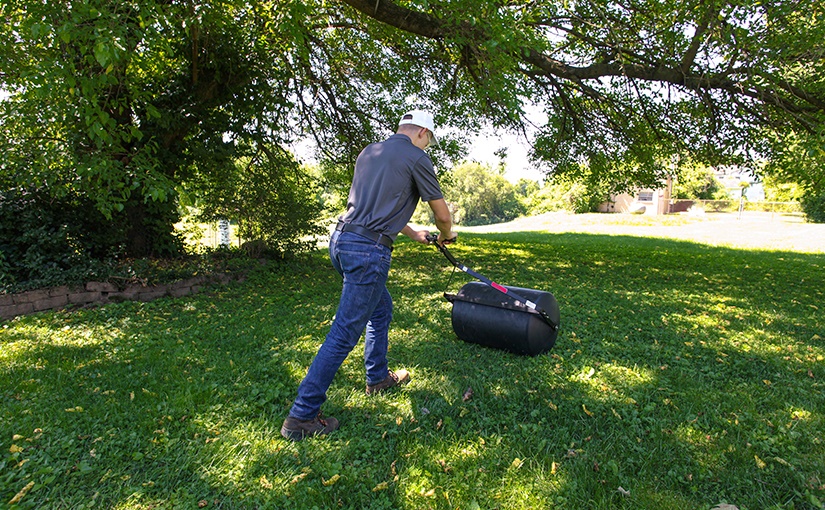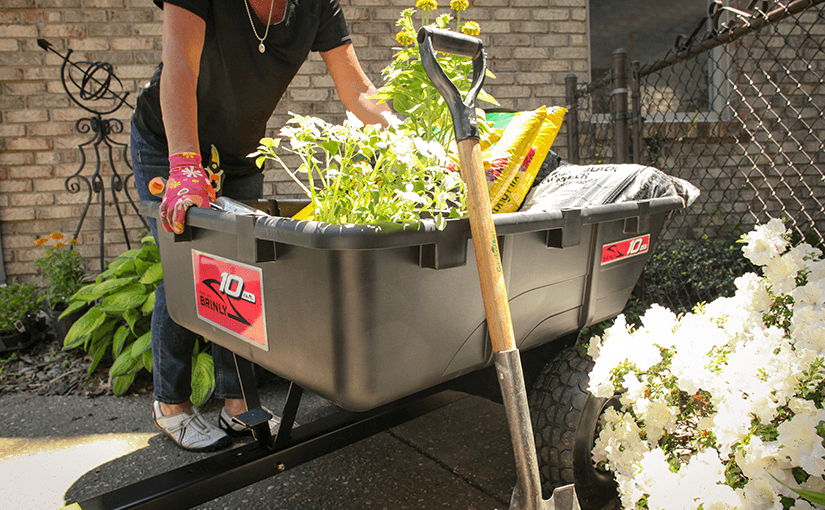
If you love being outside, spring is like a holiday for you. The lawn is greening up, leaves are budding, and the robins are dancing in your yard. Take some time to enjoy the change to warmer temperatures and new growth, but then it’s time to start thinking about your spring lawn care needs!
When is the Best Time to Start Cleaning Up My Yard for Spring?
You don’t want to head out to work on your lawn if there is still snow on the ground or if your turf is still soggy from all of the melting.
Even if it’s the first day of spring, you need to wait to work on your yard until the ground dries out and shoots of grass are popping up.
Your lawn is ready for its spring makeover as soon as the ground warms up. It takes a string of warm days to see this transformation. So, be patient.
Time for Those 11 Hacks for a Spring-Ready Lawn
You want a beautiful lawn that your family can enjoy all summer. This is the season for spring lawn care; the time to get that lawn ready for picnics, parties, and playing tag.
Here are those 11 hacks for your spring lawn care tasks:
- Do a maintenance check on your lawn equipment: If you didn’t get a chance to do a routine inspection in the fall, early spring is the time to work on your lawn equipment.
Make sure your mower and trimmer blades are sharp, check spark plugs, change the oil and make sure everything is in working order before you power up your mower and trimmers for the first time this season.
- Pick up all trash and debris: Before you start working on your lawn, you need to clean up all sticks, pinecones and any trash that flew onto your property during winter storms.
- Level snow piles: As you wait for the snow to melt, level out the snow piles along your driveway. Your turfgrass is in danger of snow molds under all of that snow. Plus, leveling out snow piles melts the snow faster.
- Gently rake your lawn: Once the snow melts and the ground starts to dry, you can lightly rake your lawn. New grass shoots are delicate though, so you don’t want to rake out your yard roughly at this point.
What are lawn sweepers? Find out in this blog post.
- Take samples of soil to test: As soon as the snow melts, it’s a good idea to test your soil. You can buy a DIY soil test kit at your local garden center, Lowe’s and The Home Depot.
Your
state’s extension service also provides soil test kits where you collect soil samples, send it to your local land-grant university, and they send you the results with recommendations.
- Add lime or gypsum: Your soil test results should give you the pH of your soil too. Turfgrass grows best in slightly acidic soil—6.0-6.5 pH. If your soil is very acidic (sour), you can add lime or gypsum to it, so it becomes more alkaline (sweet).
- Dethatch your yard: When your lawn grass starts coming in thick, it’s time to dethatch it. A dethatching attachment can help you tease out that dead layer of grass and roots to prevent it from suffocating the healthy turf on top of it.

- Aerate a compacted lawn: Soil health is the primary building block to a vibrant lawn. If your lawn’s soil is compact, you need to loosen it up by aerating it with an aerator attachment.
Tiny spoons or tines create small holes in the soil releasing carbon dioxide as well as allowing oxygen, water and nutrients to go deep into the ground.
- Pre-emergent weed control or overseeding your lawn: By the time your forsythia bush is bursting with yellow blooms, it’s time for you to apply pre-emergent weed control. Pre-emergent weed control prevents crabgrass and other grassy weeds from germinating.
One word of warning: If you plan to renovate your lawn or overseed it this spring, forgo the weed preventer. Pre-emergent stays in the soil up to 12 weeks and prevents lawn grass from germinating too.
- Add the right amount of fertilizer for the type of grass growing in your lawn: The amount and type of fertilizer that you apply to your spring lawn depends on the kind of turfgrass growing in it. For example, cool season grasses, such as Kentucky blue and fescues, need a spring fertilizer treatment if you didn’t apply any nutrients in late fall.
Since cool season lawns have a quick green-up in spring, but slow down and go dormant later in the summer, you need to use less fertilizer in the spring.
Conversely, warm season grasses, such as Bermuda, St. Augustine and zoysia, love warm temperatures and benefit from regular fertilizer treatments throughout the spring and summer.
Watch this video to see how the lawn sweeper works to dethatch and sweep up lawn clippings.
- Turn your lawn sprinkler on for the season: If you have a sprinkler system installed for your lawn, make sure you or an irrigation contractor opens it up for the season. If you do it yourself, don’t forget to check that sprinkler heads pop up, water goes through the lines, and there are no broken nozzles or spray heads.

How Brinly-Hardy Lawn Care and Garden Attachments Makes Spring Lawn Care Easy
At Brinly-Hardy, we manufacture USA-made lawn care and garden attachments. Every product in our line-up has been designed to make lawn care go faster and easier, so your spring DIY jobs get
done in time for your first BBQ. We have the following lawn care and garden attachments to help you create a lawn that your neighbors will envy:
You can find your favorite Brinly-Hardy lawn care and garden attachments at these top retailers:
If on the off chance you need a Brinly-Hardy replacement part, you can go to our
parts store or call customer service at 877-728-8224 for parts. You can also fill out our
contact form.
Source:
TodaysHomeowner.com, “
Spring Lawn Care Guide.”
 If you love being outside, spring is like a holiday for you. The lawn is greening up, leaves are budding, and the robins are dancing in your yard. Take some time to enjoy the change to warmer temperatures and new growth, but then it’s time to start thinking about your spring lawn care needs!
If you love being outside, spring is like a holiday for you. The lawn is greening up, leaves are budding, and the robins are dancing in your yard. Take some time to enjoy the change to warmer temperatures and new growth, but then it’s time to start thinking about your spring lawn care needs!




